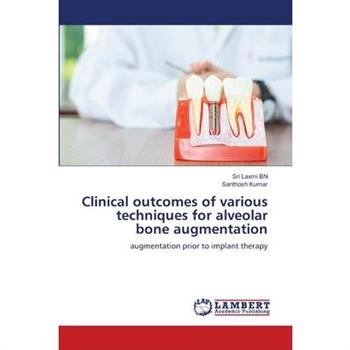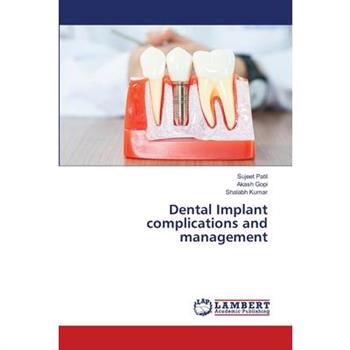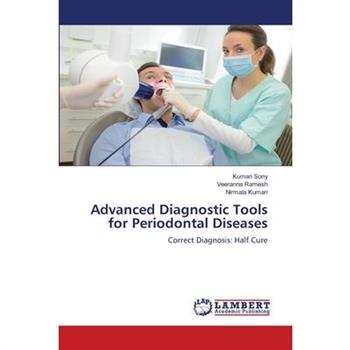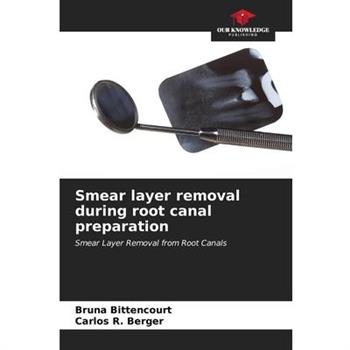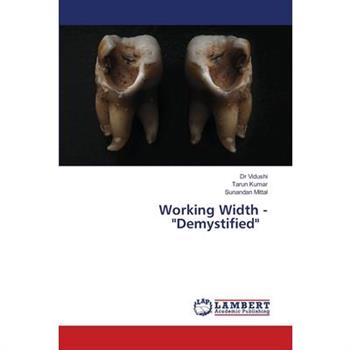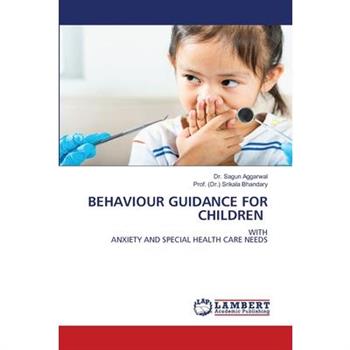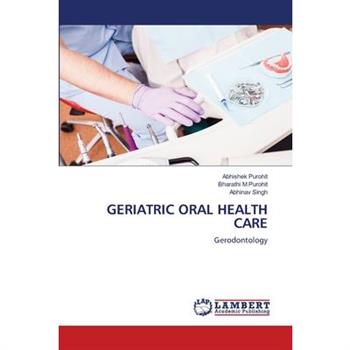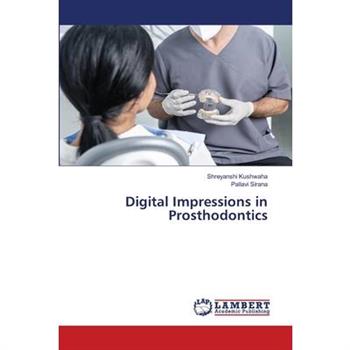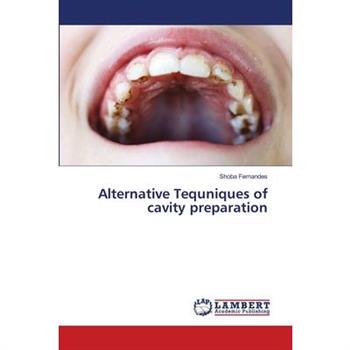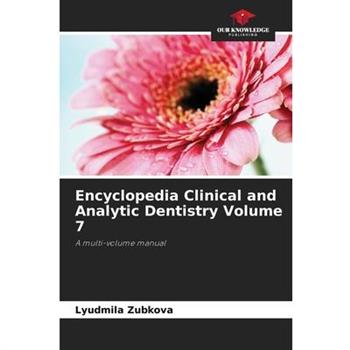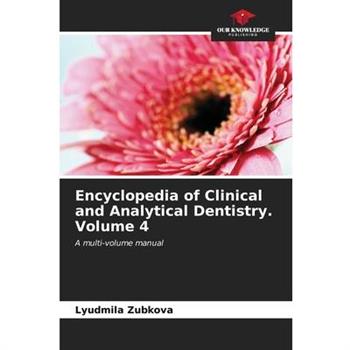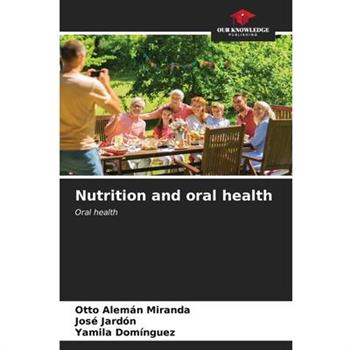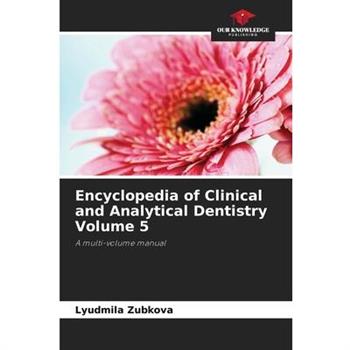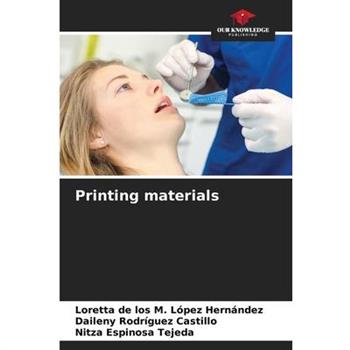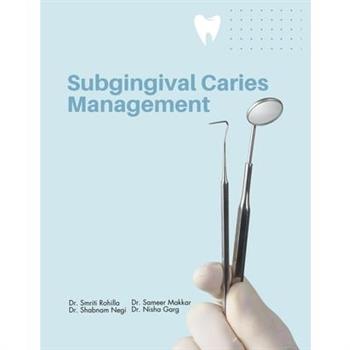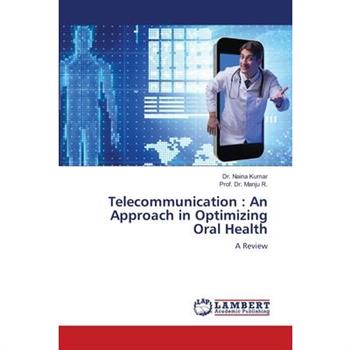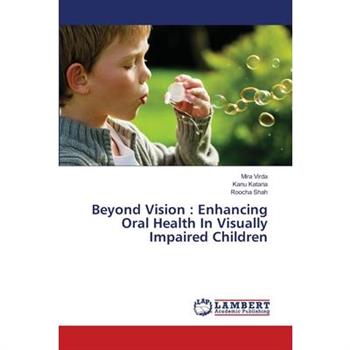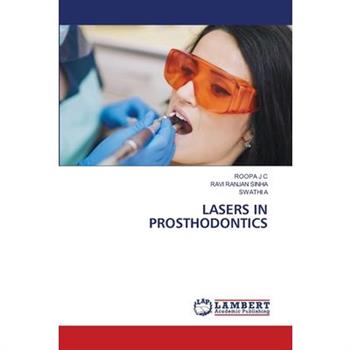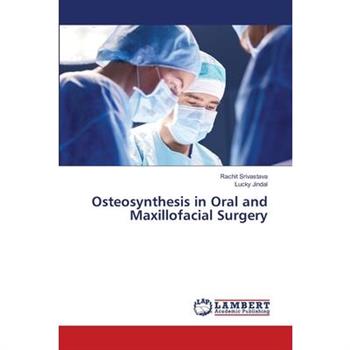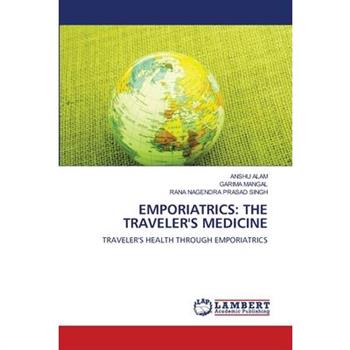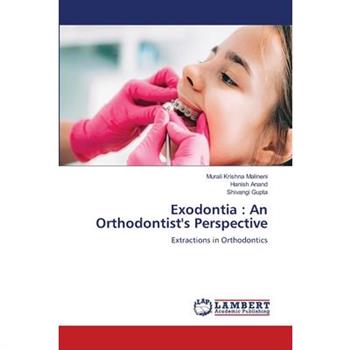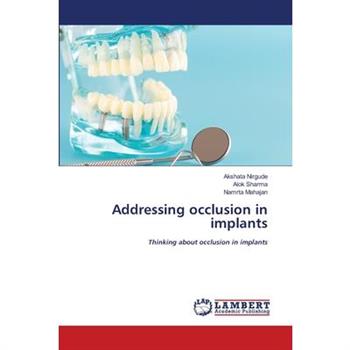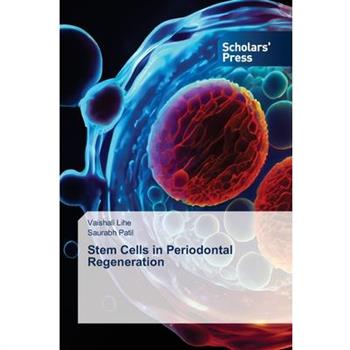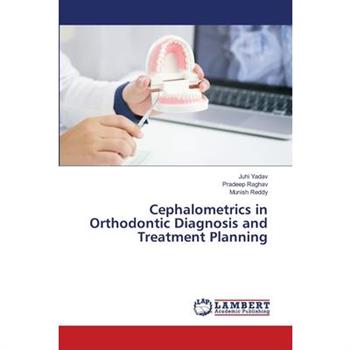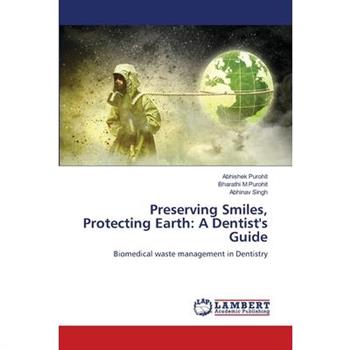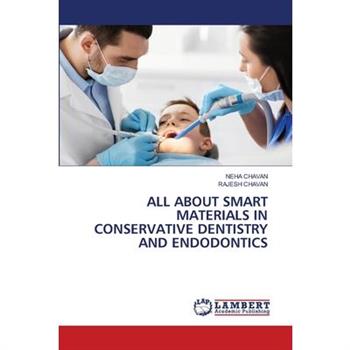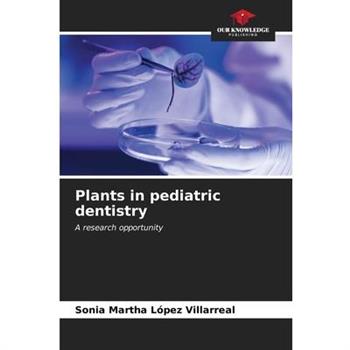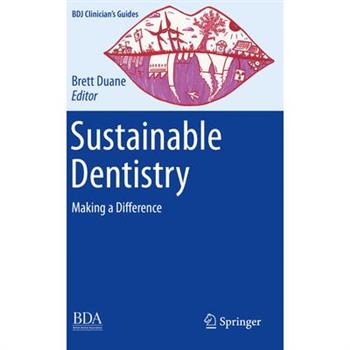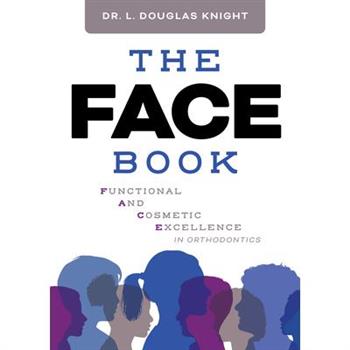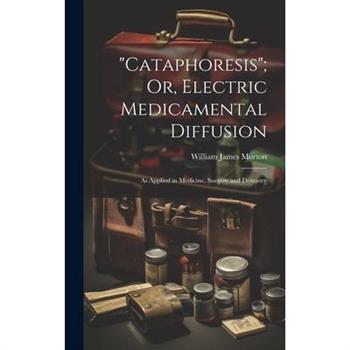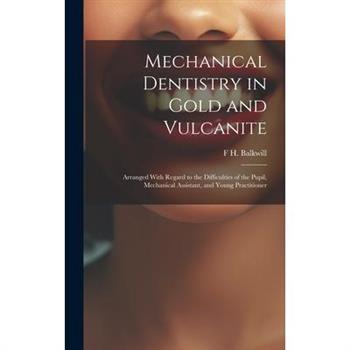Clinical outcomes of various techniques for alveolar bone augmentation
Alveolar bone augmentation is done to increase the volume of the alveolar bone to be conducive for the placement of a prosthesis or to place a dental implant. It is often noticed that there is change in the dimensions of the alveolar bone due to the lack of the blood supply in the cortical bone at the crest of the alveolar socket. This is manifested as a thinning of the alveolar ridge or loss of the socket wall. Hence it is necessary to preserve the ridge from resorption or collapse following the tooth extraction. But if there is reduced volume and altered alveolar ridge dimension then ridge augmentation must be done depending on the need of placement of prosthesis or dental implants. The technique could be a horizontal ridge augmentation or vertical ridge augmentation using different techniques depending on the availability of the alveolar bone. In this review we have included 10 different techniques used for vertical and horizontal ridge augmentation prior to implant placement. Animal studies have also been included; studies that did not give any information on implant outcomes were not considered as they did not provide any reliable information on success rate of implants.
Dental Implant complications and management
Any dentist who places or restores implants ought to be aware of these risks and have the skills necessary to handle them. While some of the problems might be resolved without much help, others could necessitate consulting experts in different fields. The implant dentist has a responsibility to identify all of these circumstances and to be aware of the appropriate procedures to adhere to in order to optimize the patient's chances of success. Thousands of appreciative patients are served by teams of highly skilled and committed specialists on a daily basis despite these frightening facts. Dental implantology is a field that not only benefits patients but also the professionals who have the expertise, drive, and skills to treat patients with the utmost care. This textbook aims to furnish all those practitioners with an extensive reference material to consult in the event that a complication occurs.
Advanced Diagnostic Tools for Periodontal Diseases
Periodontal health is an integral part of oral health. Diagnosis and proper treatment of periodontal diseases is an important aspect of healthy and functioning oral cavity. Diagnosis of periodontal diseases can be made only by comprehensive assessment of the periodontium. This book has been written with the aim to present a detailed overview of the most pertinent advances in periodontal diagnosis and focused on the relationship between various diagnostic techniques and their clinical applications. It also gives the comprehensive idea from basic science and fundamental procedures to the latest advanced techniques used for periodontal diagnosis including chair side diagnostic "point of care" kits. This book also elucidates the concepts and innovative models around prospective developments in future with respect to the diagnosis of periodontitis.
Chronic Periodontitis
Periodontitis is defined as "an inflammatory disease of the supporting tissues of the teeth caused by specific microorganisms, resulting in progressive destruction of the periodontal ligament and alveolar bone with pocket formation, recession, or both." Chronic periodontitis is often painless and hence patients do not seek early treatment. It is often neglected and hence eventually results in tooth loss since the patients seek treatment when prognosis is hopeless. Proper and prompt diagnosis is essential for appropriate treatment. Treatment plan should be based on sound diagnosis. Appropriate therapy for patients with periodontitis varies considerably with the extent and pattern of attachment loss, local anatomical variations, type of periodontal disease and therapeutic objectives. The role of the patient is as important as the role of the dentist in the management of chronic periodontitis. Patients should be encouraged and motivated to maintain adequate oral hygiene. Also patients should be encouraged to quit any deleterious habits if present which have an adverse effect on the periodontium such as smoking.
The benefits of piezoelectricity in pre-implant surgery
Dental implants are a common solution for replacing missing teeth, but their feasibility depends on the volume of bone available. When bone volume is insufficient, various techniques can be used, such as piezosurgery. The use of piezoelectric devices is increasingly applied in oral surgery. Selective cutting is possible for different ultrasound frequencies acting only in mineralised hard tissue, preserving vital anatomical structures. Using this piezoelectric technique, autogenous bone graft acquisition, osteotomy for expansion of the alveolar bone crest, and maxillary sinus enhancement via the lateral approach can be performed precisely and safely, offering excellent clinical and biological results. The aim of this work is to present the principles of the ultrasonic scalpel, as well as its applications in pre-implant surgery, based on a series of cases carried out by Dr Mohamed Tlili in the External Consultations Department at the University Hospital Dental Clinic in Monastir / TUNISIA.
Smear layer removal during root canal preparation
The removal of Smear Layer (SL) after chemical-mechanical preparation of root canals is advocated in the literature, since its permanence is deleterious and can increase bacterial viability within dentinal tubules, isthmuses and accessory canals, preventing disinfection of this region, preventing effective contact of irrigating substances, penetration of intracanal medication and correct sealing by endodontic cements. The aim of this literature review was to discuss the effect of SL on the antibacterial capacity of disinfectant solutions, the efficacy of substances proposed in the literature and auxiliary devices for removing SL, as well as to verify the quality of root canal obturation in the presence or absence of SL. It can be seen that: SL reduces the bactericidal effect of irrigating solutions; various substances are effective for cleaning SL, however, EDTA 17% remains the gold standard in research. As for the protocols for agitating the irrigating solutions, the techniques for activating the solutions are superior to conventional needle irrigation.
Working Width - ”Demystified”
In endodontics, the term "working width" denotes the cross-sectional measurement of a root canal, specifically at its apex. This is a vital component of endodontic treatment that is frequently underestimated. The appropriate working width is established by using an instrument that is marginally larger than the apical root canal's diameter. This larger tool aids in the removal of the most contaminated dentin and residual pulp from the root canal's apical region.Root canals do not always have a round shape, which can lead to misinterpretations when viewed on two-dimensional radiographs. The internal working width of root canals can be categorized as round, oval, elongated oval, flattened, or irregular. The accurate working width can be determined through a combination of understanding the internal anatomy of teeth and practical experience, using the appropriate manual instruments.If the working width is not correctly determined, it can result in either excessive removal of dentin or insufficient cleaning of the apical region. Hence, a thorough understanding of the working width is essential for successful endodontic treatment.
Impact of dental caries on children’s quality of life
Quality of life from another perspective, oriented with a clinical dental approach, related to one of the most prevalent diseases in Latin America, dental caries, which can affect not only the health of the child, but also the family environment, causing physical, psychological and economic discomfort, among others. The proposed scientific work methodology can be applied to a child population considering the opinion of their parents or guardians.
Beyond The Rinse
In endodontics, irrigants are essential for successful root canal therapy, contributing significantly to disinfection, debris removal, and overall procedural success. Recent advancements in endodontics have spurred innovative trends in irrigant technology. Beyond conventional antimicrobial agents like sodium hypochlorite, bioactive solutions have gained prominence. Researchers explore compounds such as chitosan and propolis, aiming not only to eliminate pathogens but also to actively promote tissue healing and regeneration, fostering a biocompatible environment in the root canal. Another pivotal development involves the integration of nanotechnology, with nanoparticles enhancing penetration and antimicrobial effects. Furthermore, alternative irrigation techniques such as laser-activated and passive ultrasonic irrigation are gaining attention for their ability to improve penetrative efficiency and debris removal, thereby reducing the risk of residual infection. These evolving trends not only enhance antimicrobial efficacy but also contribute to tissue healing, potentially redefining root canal therapy standards for a more tailored approach to patient care.
Nanotechnology in Dentistry
Nanotechnology is such a new and exciting area of science, so there are many ways in which it can progress. It is an emerging field with a significant potential to yield new generation of technologically advanced clinical tools and devices for oral health-care. Nanotechnology is a new approach in dentistry. By providing novel methods, it increases efficacy, accuracy and speed of treatment while decreasing costs. Nano-enabled technologies thus provides an alternative and superior approach to assess the onset or progression of diseases, to identify targets for treatment interventions as well as the ability to design more biocompatible, microbe resistant dental materials, and implants. Major advances are also expected in the field of preventive dentistry and imitating processes that occur in nature.
Bioceramic in Endodontics
Bioceramics have emerged as a groundbreaking material in the field of endodontics, revolutionizing the way dental professionals approach root canal therapy. These ceramic-based materials, such as calcium silicate-based cements, have gained prominence due to their exceptional biocompatibility, bioactivity, and sealing properties. In endodontics, bioceramics are extensively utilized as root canal sealers and repair materials. Their ability to form hydroxyapatite, a mineral similar to tooth structure, promotes tissue integration and enhances the long-term stability of root-filled teeth. Additionally, bioceramics exhibit antimicrobial properties, aiding in the prevention of bacterial recontamination. Their versatility extends to various clinical scenarios, including pulp capping, perforation repair, and apical surgery. The introduction of bioceramics in endodontics signifies a paradigm shift towards more efficient and biologically harmonious treatment modalities, fostering improved outcomes and long-term success in preserving dental health.
Behaviour Guidance for Children
Pediatric dentists have a range of behavioral management methods at their disposal, and it is crucial to tailor these approaches in accordance with cultural, philosophical, and legal standards in the dentist's country of practice. The primary objective of these methods is to benefit the child in their dental care.As societal perceptions of dentistry, technological advancements, lifestyle changes, and parental behaviors continue to evolve, there is an increasing need to identify and develop improved, safer, and contemporary behavioral management methods for pediatric patients.In recent times, there has been a noticeable shift towards emphasizing evidence-based treatment guidelines in dentistry. However, the absence of randomized controlled trials means that consensus merely reflects the prevailing mindset. Even when controlled trials are available, drawing definitive conclusions is not always feasible. This challenge is particularly evident when addressing dental anxiety, especially in the context of pediatric age groups.
Occlusion in Restorative Dentistry
Knowledge of the basic principles of dental occlusion and the masticatory system is vital for every dental student and dentist. Therefore, functional assessment and examination of occlusion should be considered and carried out on a routine basis. In restorative dentistry, when a patient attends a dental clinic for treatment, the required treatment may involve a small or major alteration in the occlusal surfaces of the teeth. Occlusal considerations are very important in the field of restorative dentistry. Ideal occlusion treatments can be carried out using a conformative approach. An advanced restorative treatment plan involving the re-organised occlusal approach is more complicated and is a major challenge for restorative dentists. Assessment and consideration of TMJ are essential in any occlusal planning for any restorative treatment. The successful outcome of treatment involving occlusal considerations depends upon the skill of the dentist and the technician, and also the treatment planning.
Geriatric Oral Health Care
"Smiles Through the Ages" is a concise yet comprehensive exploration of geriatric dental care. This book provides essential insights into maintaining oral health for seniors, addressing unique challenges such as age-related conditions, tooth loss, and gum diseases. With practical tips on daily oral hygiene, choosing the right dental products, and navigating dental appointments, this guide empowers older adults to take charge of their dental wellness. From discussing the importance of regular check-ups to exploring denture care and oral hygiene practices tailored to seniors, this book is a valuable resource for both elders and their caregivers, promoting healthy and confident smiles in the golden years.
Nanoscience in Dentistry
This book is a monograph that focuses on a crucial and emerging aspect of modern dentistry: Nanotechnology. As a rapidly growing area in scientific research, nanotechnology has become a key player in addressing various medical and scientific challenges. Its significance in dentistry is noteworthy, as it has proven to be particularly useful in creating restorative materials. Recent advancements in nanotechnology have the potential to revolutionize the dental industry.
Digital Impressions in Prosthodontics
Impression is one of the most important stages in the fabrication of a restoration. During impression making, the concentration is to accurately reproduce structures in the mouth. Digital impressions offer speed, efficiency, ability of storing captured information indefinitely and transferring digital images between the dental office and the laboratory. This book describes the evidence of possible benefits and accuracy of digital impression techniques. It also gives an insight into clinical applications of digital impression in Prosthodontics.
Nasoalveolar Molding
Cleft lip and palate are congenital abnormalities that affect the upper lip and the hard and soft palate of the mouth. The severity of the abnormalities may range from a small notch in the lip to a complete fissure groove) extending into the roof of the mouth and nose. NAM is a multi-disciplinary treatment approach that combines the expertise of various healthcare professionals, including pediatric dentists, orthodontists, prosthodontists, plastic surgeons, and speech therapists. The treatment typically begins within the first few weeks of life and continues until the time of surgical intervention, usually around three to six months of age. During this period, the infant wears a custom-made nasal stent or molding plate, which is adjusted periodically to gradually reshape the cleft segments and improve nasal symmetry. A non-surgical procedure called nasoalveolar molding (NAM) involves molding the infant's gums, lips, and nostrils using a custom-made appliance to reduce the lip gap and realign the nasal cartilage. NAM enhances the appearance of the restored lip and nose, reduces the need for extensive surgical operations, and improves long-term speech and dental outcomes.
Implants in Maxillofacial Prosthesis
Prosthetic management of nasal and auricular defects due to birth defects or as a result of trauma and surgery is well documented. A definitive prosthesis can re-establish esthetic form and anatomic contours for these type of defects, often more effectively than by surgical reconstruction. The human nose and ear because of the their prominence and commanding role in establishing facial character, they are difficult structures replace .Construction of these prosthesis supplying adequate function and aesthetics requires both prosthodontic and artistic skills.
Alternative Tequniques of cavity preparation
Dental caries is the most common chronic dental disease in the world. It is defined as a multifactorial microbial infectious disease characterized by demineralization of the inorganic and destruction of the organic substance of the tooth. Conventional treatments for caries removal are often associated with pain and fear as they are based on Mechanically driven rotary devices. In these devices tactile sensation decreases with increasing speed and overcutting of tooth structure during cavity preparation is a major disadvantage. To overcome these disadvantages a non-rotary technique is used for caries removal which is known as Minimal Invasive Dentistry (MID). Minimally invasive treatment offers an attractive alternative to managing carious lesions more conservatively and effectively, resulting in enhanced preservation of tooth structure and it includes the use of air abrasion, lasers, ultrasonic devices, polymer burs, Atraumatic restorative technique, chemo-mechanical caries removal. Hence this book aims to elaborate and analyze the scientific literature regarding the alternative therapeutic approach to caries lesion management.
Encyclopedia Clinical and Analytic Dentistry Volume 7
In the seventh volume of the "Encyclopedia of Clinical and Analytical Dentistry", the author has started the review of fundamental aspects of oral mucosal lesions (part 1), which is devoted to the development of the inflammatory process mainly in the oral mucosa. This work emphasizes the inseparable connection between inflammation and repair and the importance of decay of regulatory signaling molecules in this process.
Encyclopedia of Clinical and Analytical Dentistry. Volume 4
In Volume 4 of the "Encyclopedia..." (Multivolume Manual of Dentistry...) the author continues to develop materials concerning topical problems of dentistry (in particular, dento-mandibular anomalies and deformities), focusing the readers' attention on the functional aspects of this problem. This direction is relevant not only for Ukraine (where events that may be accompanied by such clinical symptomatology are directly occurring), but also for the entire world community.
Nutrition and oral health
Proper nutrition promotes overall health and development, the growth of the child's skeleton and teeth, which begin to form as early as foetal life. Hence the importance of proper nutrition for pregnant women. Nutrition is the biological process in which organisms assimilate the food and liquids necessary for the functioning, growth and maintenance of their vital functions. It is also known as the science that studies the relationship between food and health, especially in the determination of a diet. With the present work we intend to provide the reader with the minimum information on the importance of proper nutrition and the repercussions on the oral complex.
Encyclopedia of Clinical and Analytical Dentistry Volume 5
In Volume 5, the author, on the basis of many years of clinical and scientific observation of dento-mandibular anomalies (DMA) and the dento-mandibular system (DMS), recommends to practitioners and scientists a comprehensive approach to this problem and specific proposals both practical and theoretical. This approach is not only pragmatic, but also theoretically deterministic for doctors of various specialties.
Printing materials
Impression materials are products used to copy or reproduce in negative the hard and soft tissues of the oral cavity. A review was carried out with the aim of characterising impression materials for stomatological use in terms of composition, properties, handling, dosage and uses. It was concluded that impression materials have been appearing in the field of rehabilitative stomatology according to the need for treatment, that alginates have a varied use, zinquenolic paste is the most dimensionally stable impression material, the main property of waxes is thermoplasticity and one of the best impression materials is silicone, hence the importance of knowing its fundamental characteristics for the training of integral professionals.
Subgingival Caries Management
Subgingival caries are the caries whose margins are located subgingivally be it from buccal, palatal/lingual or proximal surface i.e., below the gingival margin. The impact of subgingival caries is bidirectional on the tooth surface as well as on the periodontal tissues, increasing the negative impact on the patient's overall oral health status. There is a paucity in the organised literature regarding the subgingival caries and its management. Hence, this dissertation attempts to concise & put forward the concept of Subgingival Caries & its Management for the clinicians of various specialities. Thus, enabling a better treatment approach whenever encountered with such tricky and complicated clinical situation.
Telecommunication
Teledentistry, an evolving facet of telehealth, serves as a valuable tool in pediatric dentistry, surmounting obstacles to children's oral healthcare access. Employing telecommunication technologies, it enables remote diagnosis, consultations, treatment planning, and education. Notably, teledentistry in pediatric dentistry offers benefits like enhanced parental convenience, reduced travel, and engaging platforms for children.This overview delineates teledentistry's pivotal aspects and advantages in pediatric dentistry, spotlighting its role in ameliorating children's oral health. Furthermore, it underscores challenges-such as technological hurdles, regulatory constraints, and the need for parental participation-associated with teledentistry implementation in this field.Studies and programs in teledentistry exhibit promising outcomes, providing prompt dental care, preventive education, and early interventions for young patients. However, ongoing exploration and fine-tuning of protocols, privacy measures, and reimbursement policies are essential to fully harness teledentistry's potential in pediatric dental practices, ensuring widespread, high-quality care for children globally.
Beyond Vision
This book delves into the critical area of oral health education specifically tailored for visually impaired children. Recognizing the unique challenges these children face, the book presents a comprehensive framework for assessing and improving oral health education within this demographic.The initial sections focus on understanding the specific needs and barriers that visually impaired children encounter regarding oral health. It highlights the lack of accessible educational materials, limited awareness among caregivers, and the need for specialized teaching methodologies. Building upon this foundation, the book outlines a systematic assessment model designed to evaluate existing oral health education programs. This model takes into account sensory learning modalities, tactile materials, audio instructions, and interactive techniques catered to the visually impaired. It emphasizes the importance of multisensory approaches to reinforce oral hygiene practices effectively.Moreover, the book introduces innovative strategies and tools for educators, healthcare professionals, and caregivers working with visually impaired children.
Lasers in Prosthodontics
The field of prosthodontics has come a long way from just replacing missing teeth by simple mechanics to the boundless era of modern technology. One such technological advancement is the introduction of lasers in the field of prosthodontics that has replaced many conventional surgical and technical procedures and also improved the quality of treatment rendered to a patient. Laser offers shorter and painless procedure with minimal or no discomfort, thus causing less damage to the surrounding tissue.
Osteosynthesis in Oral and Maxillofacial Surgery
This manual provides comprehensive information on the principles of fracture healing, armanentarium used in oral and maxillofacial surgery, principles of internal fixation of fractures, through detailed and instructive drawings together with clinical situations as it offers important guidelines for the surgeon in the operating room. The techniques are based on the general principles developed and continuously refined by the AO/ASIF group.
Emporiatrics
The journey overseas has its manifold benefits resulting in its increased trend these days. People are more aware of its positive impact on mental and physical wellness, but they are less aware of the risks and issues that it poses. International travel is becoming more popular as it promotes physical and mental well being while also providing job and educational opportunities. With this boost in international travel, it is critical to ensure traveler's safety. Tourists are susceptible to a wide range of travel-related health issues, from insect bites to injuries in extreme sports or due to extreme climate. Children, elderly, and people with underlyingdiseases should take extra care and precautions. Emporiatrics, also known as travel medicine is a multidisciplinary specialty that promotes health and provides prevention and management of health problems encountered by international travellers, with a primary emphasis on preventive pre-travel care. It suggests the need to consult health care professional beforehand and if required referral to travel medicine specialist. Therefore, it is necessary to raise awareness about this issue for the well being and safety of the travelers.
Dental Implant Failure
Tooth loss can be effectively and consistently treated with dental implants. The prognosis of a dental implant depends on a plethora of factors. Long-term dental implant failures are still documented, despite the excellent survival rates. These events result in implant removals and further financial and health consequences. While extrinsic variables that increase implant success rates have been well studied, little is known about how hereditary factors affect this issue. This book gives an insight into the genetic factors that might contribute to implant failure and facts to keep in mind while rehabilitating an edentulous patient with dental implants.
Smiles and photographic art for the benefit of fixed prosthodontics
Photography is both an art and an inexhaustible source of information. The nature of the environment, the small sizes and distances involved, the difficulty of access, make clinical photography an art as well as a science. It is essential for the dental surgeon who wants to improve and go further. However, still very few practitioners use it. Many preconceived ideas exist about photography in dentistry: It is a complex and time-consuming procedure which requires prior training, due to the diversity of its equipment and the precision of the shooting techniques for reliability. the image. In this work we will try to detail the different parameters of the smile and to clarify preconceived ideas about dental photography. In the first part, we will detail the aesthetic references and the methods of analyzing the smile. In a second part, we will detail the major interests of photography in the dental office and in the prosthesis department and we will simplify the technical aspects by focusing on the knowledge necessary for the choice of its equipment and for daily practice in dentistry.
Exodontia
The philosophy of extraction related to the orthodontic treatment is not new. Establishment of normal functional occlusion in balancing with supporting structures occasionally requires the reduction of one or more teeth. Most extractions are performed as part of a general plan of orthodontic treatment. The nature of malocclusion and the age of the patient is an important factor in deciding whether the extraction is needed or not needed. To extract or not has always been a controversial in orthodontics. Since the early days of orthodontics the need for tooth extractions in certain orthodontic situations has been discussed. In the early twentieth century, Angle favoured non-extraction orthodontic treatment based on the concept of the occlusion line. He believed it possible to correctly position all of the 32 teeth in the dental arches and, as a result, the adjacent tissues (tegument, bone and muscle) would adapt to this new position. This book helps the readers to upgrade their knowledge and treatment planning skills for camouflage and surgical orthodontics.
Addressing occlusion in implants
The clinical success and longevity of endosteal dental implants are controlled, in a large part, by the mechanical milieu within which they function. The occlusion is a critical component of such a mechanical environment. Occlusion is not defined solely as the nature of occlusal contact between opposing teeth but more broadly refers to the dynamic relation between the teeth, the neuromuscular system, the TMJ and their interactive relationship on the craniofacial environment. "Implant protected occlusion" refer to an occlusal scheme that is often uniquely specific to the restoration of endosteal implant prosthesis.There are various considerations for following the implant protected occlusion (IPO) scheme that should be judiciously implemented before restoration which are as follows: elimination of premature occlusal contacts, mutually protected articulation, controlling the occlusal table width, provision of adequate surface area to sustain load transmitted to the prosthesis, implant body orientation, influence of load direction, timing of loading, parafunctional activity, occlusal material, implant crown contour, design of the prosthesis should favour the weakest arch.
Stem Cells in Periodontal Regeneration
Stem cells play a pivotal role in periodontal regeneration due to their unique ability to transform into various specialized cell types. In periodontal therapy, these cells hold immense promise as they can differentiate into specific tissues like bone, periodontal ligament, and cementum, crucial for repairing and regenerating damaged structures in the gums and supporting bones. Researchers explore different sources of stem cells, including dental pulp, periodontal ligament, and even adipose tissue, harnessing their regenerative potential to combat periodontal diseases. These cells are manipulated and guided to differentiate into the required cell types, promoting tissue repair and regeneration. Stem cell-based therapies offer a futuristic approach in addressing periodontal issues by promoting natural regeneration and potentially revolutionizing treatment strategies for gum diseases and bone loss associated with periodontitis. This comprehensive book serves as an exhaustive and meticulous presentation of stem cell therapies, elucidating their pivotal role in periodontal regeneration while exploring diverse sources of these cells.
Cephalometrics in Orthodontic Diagnosis and Treatment Planning
Cephalometric radiography was introduced into orthodontics in the 1930s, but its broader acceptance for practical application occurred in the last thirty years. Numerous authors have introduced a variety of analyses in recent years. Different landmarks, angles, and orientation planes have been utilized in these analyses. Consequently, measurements vary, encompassing studies on facial growth, the identification of malformations, etiological studies to assess treatment responses, and serving as a complement to status analysis in orthodontics.
Preserving Smiles, Protecting Earth
Management with "Sustainable Smiles." This comprehensive guide navigates the historical perspective, definitions, classifications, and categorizations, providing a profound understanding of waste generation, segregation, and the entire lifecycle from collection to transportation. Delving into state-of-the-art waste treatment technologies and final disposal, the book emphasizes sustainable practices and the compelling rationale for responsible biomedical waste management. Tailored for dentistry, it addresses unique challenges, underscores the need for personnel training, and draws insights from a comprehensive literature review. Offering a practical dimension, the guide presents a state-wise analysis of common biomedical waste management treatment facilities in India. "Sustainable Smiles" not only educates but inspires a collective commitment to responsible biomedical waste management, ensuring a greener and healthier future in dental practices.
All about Smart Materials in Conservative Dentistry and Endodontics
In dentistry, there is no single material that is ideal in nature and fulfils all the requirements of an ideal material. So, the search for an "ideal restorative material" continues, leading to introduction of newer generation of materials. These are termed as "smart materials". Smart materials can be defined as, designed materials that have one or more properties that can be significantly changed in a controlled fashion by external stimuli, such as stress, temperature, moisture, pH, and electric or magnetic fields.These materials are also referred to as Responsive materials. Now Material science is not what it used to be before. Traditionally materials used in dentistry were designed to be passive and inert, that is, to exhibit little or no interaction with body tissues and fluids. Materials used in the oral cavity were often judged on their ability to survive without interacting with the oral environment. The present scenario has changed. Many of the advanced materials at the forefront of materials science are functional. They are required to perform things and to undergo purposeful change. They play an active part in the way the structure or device works.
Analysis
The environmental issue has taken a lot of strength in recent years, we are in an era where the damage that humanity has done to the planet is becoming more noticeable. However, a large part of the population has begun to become aware and take action on this issue to begin to minimize the repercussions we have created. Costa Rica in particular wants to become a carbon neutral country within a few years so this research topic seemed very relevant to the current national reality. Similarly, the dental profession is quite large in our country, so it could be an important brake if they do not take appropriate measures on environmental education and how to bring their dental clinics to a greener practice as traditional dentistry is highly polluting. One of the most important points in the research was to know what was stopping dentists from starting the journey towards a more environmentally friendly profession and to review the most polluting areas and materials as well as ecological solutions.
Plants in pediatric dentistry
Plants in pediatric dentistry, a research opportunity addresses the evaluation and research of plant extracts and essential oils of some plants as well as the performance of different tests to measure their potential application in oral diseases and treatments in the area of dentistry, especially in the treatment of caries and pulp therapy in pediatric dentistry.Dental caries is a highly prevalent disease of multifactorial origin and one of the main public health problems worldwide. Early childhood caries is often considered the first cause of dental consultation in children and pulp therapy represents a common treatment in order to preserve the tooth. Plants represent a valuable research opportunity in pediatric dentistry.
Sustainable Dentistry
This book provides the why, what and how on delivering a sustainable dental practice. Dentists have a professional duty to support optimal oral health. They also have a moral duty to do so in a way that leaves the smallest footprint on this planet and takes their impacts on the environment and society into account. This book helps the reader to develop a sustainable practice, driven by prevention and delivering the right care at the right time and at the right place, within systems of universal, needs-based access to care. Readers learn how to opt for a practice that is supplied with sustainable energy and encourages biodiversity while building models of care that maximize remote patient engagement and avoid travel. Clear guidance is given on responsible decontamination, waste management and environmentally sensitive ways of managing people with anxiety or behavioural difficulties within the dental setting. The future of dentistry products and innovations to reduce environmental impacts in the dental practice are discussed. This book is a must-have for dentists, dental students and all members of the dental team.
The Face Book
When most people think of orthodontic care, they imagine straightening teeth and braces or clear aligners. In this era of -it-yourself orthodontics, they might even think of mail-away retainers that don't even require you to set foot inside an office. But there is so much more to orthodontic care than that. In this book, Dr. Douglas L. Knight educates patients on why orthodontic care is so much more important and comprehensive that most understand.The FACE Method is a first-of-its-kind comprehensive, interdisciplinary approach to keeping your entire body healthy, with an emphasis placed on the face. It is different from traditional care in that it includes setting goals around aesthetics, airway, long-term stability, TMJ, jaw function, periodontal health, and more. This sets patients up for the best possible long-term outcomes and a functional mouth for the rest of their lives. Problems like crooked teeth or TMJ can be affected by other body systems that need to be addressed, not just solved temporarily with a quick fix. FACE-trained orthodontists don't just care about aesthetics or have the singular goal to straighten teeth. They solve the fundamental, underlying issues and have a goal-oriented approach that considers the health of the entire person, valuing long-term, stable outcomes. This is the kind of all-inclusive care adults and children deserve.
Improving Health with a Plant-Based Diet
"Improving Health with a Plant-Based Diet: A Guide to Sustainable Eating" will take you on a trip of wellness that will change your life. This complete guide, written by Ivo, a health and nutrition expert, shows you how to achieve vibrant health through plant-based diet. Find out the newest ideas and strategies that have been shown to work to make a plant-based living not just a choice about what to eat but also a long-term, all-around way to improve your health.This up-to-date guide looks at popular terms like "sustainable eating," "nutrient density," and "plant-based proteins," giving readers a way to improve their health and live in a way that is better for the environment. Ivo gives people who want a healthy and long-lasting approach to nutrition a lot of useful information, from busting common myths to showing scientific proof that plant-based diets lower the risk of chronic diseases.Learn useful tips for switching to a plant-based diet, look at sample meal plans that are made to fit different dietary needs, and find out how plant-based eating can help the environment. This book gives you the information and tools you need to succeed on a plant-based journey, no matter how long you've been interested in it or how new you are to it.Start a life-changing journey where health, environment, and tasty plant-based meals come together. "Improving Health with a Plant-Based Diet" will help you live a fuller, healthier life with more energy and a stronger link to the earth.
Human Teeth - From Function to Esthetics
This book provides a comprehensive overview of oral health. It includes twenty-one chapters that address such topics as dental anatomy and morphology, smile design, oral health, prosthetics and implantology, orthodontics, dental materials, use of artificial intelligence in dentistry, and regenerative medicine.
Dental Trauma and Adverse Oral Conditions - Practice and Management Techniques
Holistic dental care includes looking at prevention, treatment, cure and long-term management. This book endeavors to provide readers with information on dental emergencies and dental trauma, with their associated management and other issues. Other relevant conditions that are highlighted include avulsion, orbital trauma, salivary duct cysts and periodontal disease. Information is also included on mental health and quality of life impacts arising for individuals from dental trauma. Teledentistry, which is relevant for all clinicians in the current climate of digital technologies, is also covered. The book is a compilation of work by dental specialists from across the world, including public healthcare professionals in the field of dentistry. It offers updates and reviews on many interesting and complex issues within the practice of dentistry.
Pediatric Dentistry - A Comprehensive Guide
As a parent, guardian, or healthcare provider, ensuring the oral health of children is a vital aspect of overall health and well-being. Pediatric Dentistry - A Comprehensive Guide is an insightful book that covers critical concepts and clinical studies in pediatric dentistry to provide a comprehensive understanding of oral health in children. Chapters address such topics as the "dental home" concept, which involves early dental visits and establishing a dental home for children to prevent oral health issues, stomatognathic dysfunction, the role of the community in promoting good oral health in children, the effects of malnutrition on pediatric oral health, and the role of metals in pediatric oral health. The book is a valuable resource for pediatric dentists, dental hygienists, and other healthcare providers interested in promoting and maintaining oral health in children. It also serves as a guide for parents and guardians seeking to ensure optimal oral health for their children.
"Cataphoresis"; Or, Electric Medicamental Diffusion
In this groundbreaking work, pioneering physician William James Morton explores the use of electrical currents in medical treatment. Drawing on his own research and experimentation, Morton describes the principles of electric diffusion and its applications in everything from dental surgery to cancer treatment. This book is a must-read for anyone interested in the history of medical science.This work has been selected by scholars as being culturally important, and is part of the knowledge base of civilization as we know it.This work is in the "public domain in the United States of America, and possibly other nations. Within the United States, you may freely copy and distribute this work, as no entity (individual or corporate) has a copyright on the body of the work.Scholars believe, and we concur, that this work is important enough to be preserved, reproduced, and made generally available to the public. We appreciate your support of the preservation process, and thank you for being an important part of keeping this knowledge alive and relevant.
Mechanical Dentistry in Gold and Vulcanite
This practical guide to mechanical dentistry is an essential resource for anyone interested in the field. With clear explanations, step-by-step instructions, and helpful illustrations, Balkwill provides a comprehensive overview of this important aspect of dental practice.This work has been selected by scholars as being culturally important, and is part of the knowledge base of civilization as we know it.This work is in the "public domain in the United States of America, and possibly other nations. Within the United States, you may freely copy and distribute this work, as no entity (individual or corporate) has a copyright on the body of the work.Scholars believe, and we concur, that this work is important enough to be preserved, reproduced, and made generally available to the public. We appreciate your support of the preservation process, and thank you for being an important part of keeping this knowledge alive and relevant.





